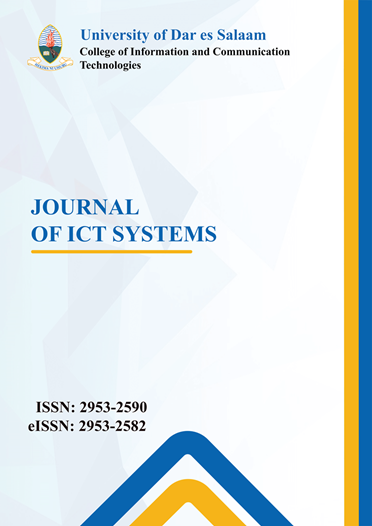Hybrid Communication Architecture Based on Hierarchical Computing for Low Voltage Power Network Automation: A Case of Tanzania Electric Grid
DOI:
https://doi.org/10.56279/jicts.v2i2.9031Abstract
Utility companies in developing countries, such as Tanzania, have made significant strides in automating the generation, transmission, and primary distribution segments of their electrical grids. However, automation in the Low Voltage Power Network (LVPN) remains limited, primarily due to the absence of sensors, actuators, and a communication infrastructure needed for real-time data transfer. This lack of automation leads to inefficiencies and service disruptions for both utilities and consumers. The Smart Grid Focus Group (SGFG) identifies critical applications such as Advanced Metering Infrastructure (AMI), Distributed Energy Resource (DER) coordination, and Distribution Automation (DA) that are essential for LVPN automation, each with specific latency requirements. Existing communication architectures fail to meet these latency limits due to the unique challenges faced in developing countries. This paper proposes a hybrid communication architecture built on a three-level hierarchical computing model tailored for Tanzania Electric Supply Company Limited (TANESCO) and the LVPN environment. Implemented in a laboratory testbed with actual deployment devices, the system achieved an average latency of 7.059 ms, well below the 20 ms threshold necessary for AMI, DER, and DA. This promising result demonstrates the architecture's ability to effectively support LVPN automation, enhancing service delivery and operational efficiency in Tanzania's electrical grid.



